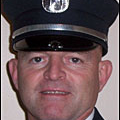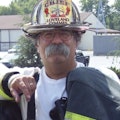Parking Deck Fires: What You Need to Know
A car fire in a parking ramp can be compared to a room and contents fire in a high-rise building when it comes to bring necessary equipment and access.
Fighting a vehicle fire can be challenging, but try to fight one in a ramp garage and it's even more of a task!
If you have never experienced a vehicle fire in a ramp garage, you may be in for a rude awakening. Ramp garages pose some major issues for firefighters who respond to them. They require significant pre-planning by your fire department.
Much the same as a high-rise building fire, firefighting personnel are going to be required to carry all needed equipment with them for fighting a vehicle fire in a ramp garage. Most have limited access, not to mention the height clearance restrictions. They certainly will not have adequate clearance for fire apparatus to pull in, making it more challenging for suppression operations.
Some fire departments have utility vehicles which are under these height restrictions such as a chief's car. If your department has a utility vehicle, it can be used as a shuttle for moving the required tools, hoses, and equipment needed to operate within the ramp. Most will also accommodate room for transporting manpower to the area.
Most, but not all, ramp garages are equipped with standpipe systems. Knowing where the fire department connections are located is imperative. In addition to having standpipe systems, most ramp garages being built today are equipped with automatic sprinkler systems. They can be readily identified by conducting a walk through of the garages in your district.
Below Grade Fires
Below grade level vehicle fires in ramp garages are more likely to cause the most difficulty for responding firefighter. In addition to carrying all their equipment with them, locating the vehicle that is burning will be tricky at best.
Company officers need to check with security personnel or a garage attendant to gather the needed information as to the level and location of the vehicle fire before descending into the garage. This can take some of the guess work out of finding the correct level.
In some situations, smoke conditions will dictate that firefighters search each level while working their way down into the parking garage area looking for the vehicle fire. An alternative method that can be used, and one that might be more productive, would be for firefighters to start working their way up from the lowest level.
By working upward, firefighters can usually find the vehicle fire once smoke conditions are encountered as the vehicle will generally be on that level or the level immediately above it.
On the other hand, if firefighters decide to work their way down through the smoke searching for the fire, they might have to search each level within the garage before they locate the fire. Such a search would, to a certain extent, delay reaching the fire allowing it to gain in intensity. This delay will also allow more smoke from a vehicle fire to saturate the garage further. This added smoke will slow firefighting operations even more as visibility worsen on the upper levels requiring crews to go on air sooner than they may want to.
The crews should bring the thermal imaging camera to help locate the fire. If you enter a ramp, immediately scan the area to look for large areas of heat. Remember that you will see heat from cars that were recently parked.
The driver/pump operator has to proceed and make the fire department connection, and obtain a water source to feed the system. Quite often the sprinkler system will have activated in the garage keeping the fire in check until fire personnel arrive. However, don't count on this being the case all the time as many systems are not maintained.
Ramp garages can pose exposure concerns. A delay in getting to the vehicle's location may allow the fire to spread to vehicles on either side.
In addition, many below grade ramp garages have service entrances which lead into adjacent buildings allowing fire to spread very easily into them. This is a real concern should a vehicle on fire be parked next to one of these entrances. In extreme cases, additional alarms will have to be requested bringing additional firefighters and resources to the incident as the dangers posed by these exposures necessitate.
In most situations the ventilation systems will shut down automatically once a fire alarm has been activated in the below grade garages. During a pre-plan inspection of the ramp garage, information pertaining to the ventilation system should be obtained.
The incident commander should request assistance from a maintenance representative in matters pertaining to ventilating the garage area. Additionally, all buildings and office spaces exposed to the vehicle fire should be examined by personnel to ensure that smoke conditions do not exist in the buildings, both during the fire operations and immediately following.
Above Grade Fires
Ramp garages which are located above grade level have many of the same similarities as those found in below grade garages. However, the location of a vehicle fire will be more evident in an above grade ramp garage than below grade ramp garage. This is primarily due to the fact that smoke can be seen coming from the level where the vehicle fire is located upon approaching the scene.
Operations at above grade ramp garages actually will present the firefighters with options that are not available for below grade operations. One option or method is the use of aerial devices allowing for quicker access to the levels.
In addition to moving firefighters with their tools and equipment up to the fire floor, the aerial can be used as a waterway or portable standpipe. This can be created either by using a pre-piped waterway found on some of the aerial apparatus, or by advancing a supply line up the ladder bed with a gate on the end. In essence creating a standpipe system. Using this method, firefighters are assured of a secure water source.
Another commonly used method for getting a water supply in place is using a rope to haul a supply line up the outside of the garage to the desired level. Once in place, the attack hose (brought up with the other tools and equipment) can be attached to it. Another option is to just drop a supply line from the fire floor over the side of the outside of the garage to the engine.
Strong winds will hamper operations at above grade level ramp garages. Exposures become of a greater concern to firefighters as these winds allow spreading of fire to happen more ardently. In general, the exposures are the same as were found in the below grade ramp garages mainly other vehicles parked next to the one on fire as well as structures that are attached to the ramp garage.
Attached structure exposures generally have access stations on each level of the garage. They are used to allow patrons and employees accessibility to the businesses or office space within them. Under windy environments, it becomes imperative that fire personnel deploy quickly to stop any further spread. of the vehicle fire to these exposures.
Cargo And Hazmat Concerns
From time to time, firefighters might be confronted with a cargo or utility van or similar style vehicle owned by a contractor carrying commercial supplies. Should this be the case, identifying the contents is critical. Check for any placards on the vehicle or labels on packages.
In today's environment a terrorist event occurring in a ramp garage cannot be ruled out as was the case in the 1993 car bomb attack at the World Trade Center in New York City.
Safety should be everyone's responsibility. Remember to follow your fire department's SOGs for vehicle fires and always wear your full personal protective equipment.
Vehicle fires pose many hazards for firefighters. The most serious of which are the toxic smoke and gases being released from the burning components. Therefore, it is a must that all firefighters wear their SCBA until complete ventilation of the area has been performed.
Another safety concern, are the hazards associated with the shock absorbers on the front and rear bumpers, pressurized struts, and the fuel systems. All these items can explode, as can the vehicles tires and the batteries. Additionally, firefighters need to monitor and be careful around all cars equipped with air bags and high voltage electrical systems.
Some fire departments have an aggressive approach when it comes to firefighter's safety and have a safety officer respond on all incidents. They would be responsible for conducting air quality monitoring within the garage area, verifying the air quality is safe to breathe before allowing firefighters to remove their SCBA. Many times it might be well after the fire has been extinguished before the safety officer can give the all clear announcement allowing firefighters to remove their SCBAs. I highly recommend staffing the incident safety officer position at these types of incidents.
RUSSELL MERRICK, a Firehouse.com Contributing Editor, has over 30 years in the fire service and has been with the Rochester, NY, Fire Department, since 1986 were he serves as a captain and station commander. He developed and implemented the health and safety program for the department and held the position of incident safety officer before leading the department's special operations command. Russell authors the Firehouse.com weekly drills and speaks at Firehouse Expo, the New York State Professional Firefighter's Annual Safety Seminar Series, and for the New York State Association of Fire Chief's. Russell partipated in the first Firehouse.com Training & Tactics Talk podcast on Firehouse.com.
About the Author

Russell Merrick
Firehouse.com Contributor
Billy Goldfeder
BILLY GOLDFEDER, EFO, who is a Firehouse contributing editor, has been a firefighter since 1973 and a chief officer since 1982. He is deputy fire chief of the Loveland-Symmes Fire Department in Ohio, which is an ISO Class 1, CPSE and CAAS-accredited department. Goldfeder has served on numerous NFPA and International Association of Fire Chiefs (IAFC) committees. He is on the board of directors of the IAFC Safety, Health and Survival Section and the National Fallen Firefighters Foundation.
